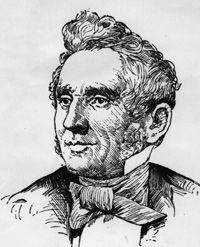Rubber Chemistry
What makes rubber so elastic? Like plastic, rubber is a polymer, which is a chain of repeating units called monomers. In rubber, the monomer is a carbon compound called isoprene that has two carbon-carbon double bonds. The latex fluid that seeps from rubber trees has many isoprene molecules. As the latex dries, the isoprene molecules crowd together and one isoprene molecule attacks a carbon-carbon double bond of a neighboring molecule. One of the double bonds breaks, and the electrons rearrange to form a bond between the two isoprene molecules.
The process continues until you have a long strands of many isoprene molecules linked like a chain. These long strands are called polyisoprene polymer. Each polyisoprene molecule contains thousands of isoprene monomers. As the drying continues, the polyisoprene strands stick together by forming electrostatic bonds, much like the attraction between opposite poles of two bar magnets. The attraction between these strands holds the rubber fibers together and allows them to stretch and to recover.
Advertisement
However, temperature changes can affect the electrostatic interactions between the polyisoprene strands in latex rubber. Hot temperatures reduce the interactions and make the rubber more fluid (sticky). Colder temperatures increase the interactions and make the rubber more solid (hard, brittle).
In the early 1800s, several scientists and inventors set out to make rubber more durable. One famous inventor, Charles Goodyear, reasoned that you could reduce rubber's stickiness by mixing it with various dry powders. He experimented by combining talcum and other powders with rubber. In 1838, Goodyear met Nathaniel Hayward, who had made progress in treating rubber sheets with a solution of sulfur and turpentine and then drying them in the sun. Hayward's sun-dried rubber was harder and more durable, so he patented the process, which he called solarization.
Goodyear purchased the patent rights to solarization and began experimenting with sulfur compounds. By trial and error, the inventor mixed latex rubber with sulfur and lead oxide. Legend has it that some of the mixture fell onto a hot stove, and the resulting rubber was hard, flexible and durable. Goodyear's accidental process eventually became known as vulcanization. He also found that changing the amount of sulfur changed the rubber's characteristics. The more sulfur used, the harder the rubber became. So what happens when rubber is vulcanized?
When polyisoprene strands are heated with sulfur and lead oxide, the sulfur atoms attack the double bonds in the polyisoprene strands and bind to the carbon atoms. Sulfur atoms also can form bonds among themselves (disulfide bonds) and cross-link adjacent polyisoprene strands to form a netlike structure in the rubber.
This cross-linking strengthens the polyisoprene to make it harder, flexible and more durable. As Goodyear found, the more sulfur used, the more cross-links can form, and the harder the rubber gets. Goodyear's vulcanization process involved combining latex rubber, sulfur and lead oxide in high-pressure steam for up to 6 hours to achieve the best results.
